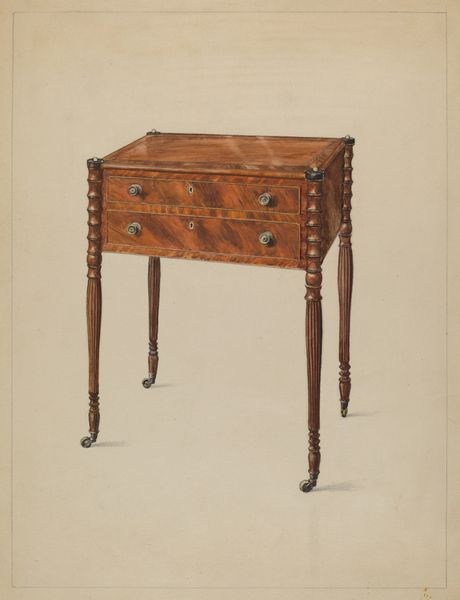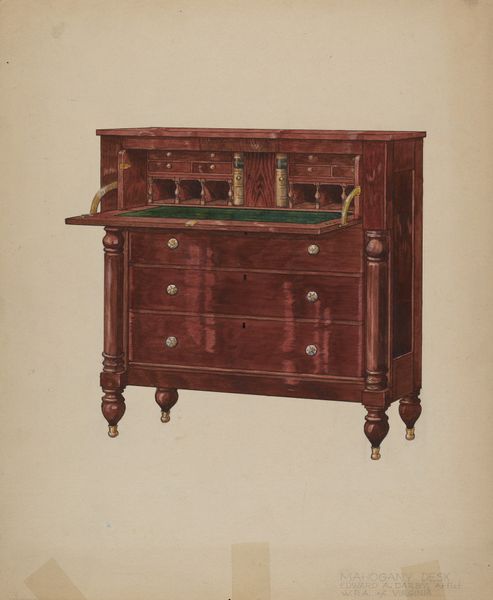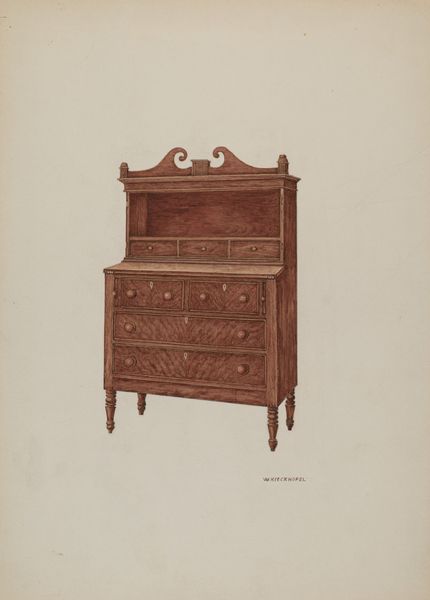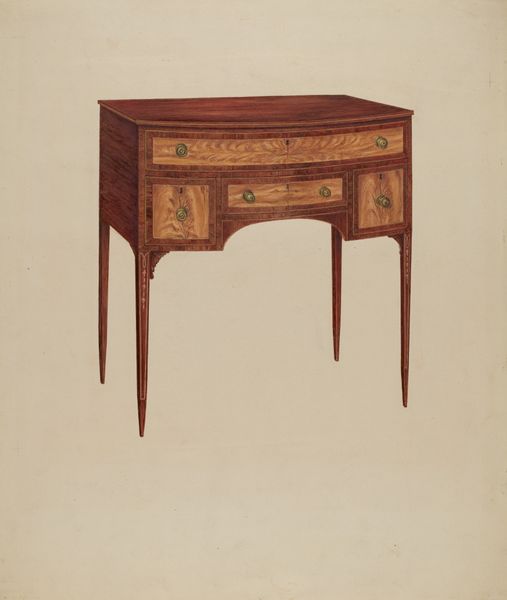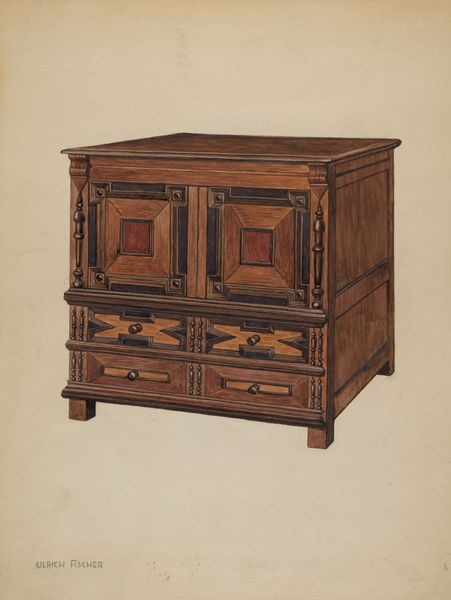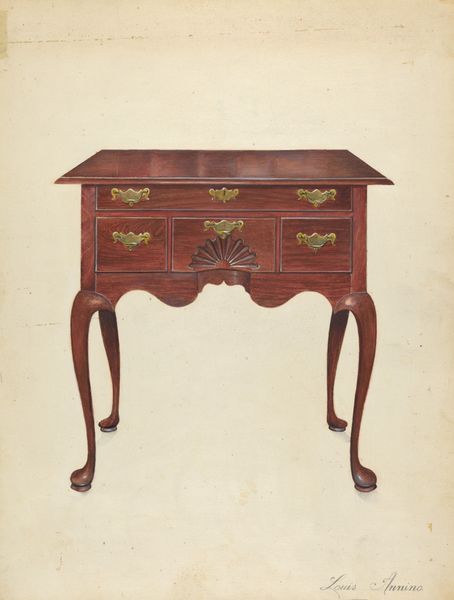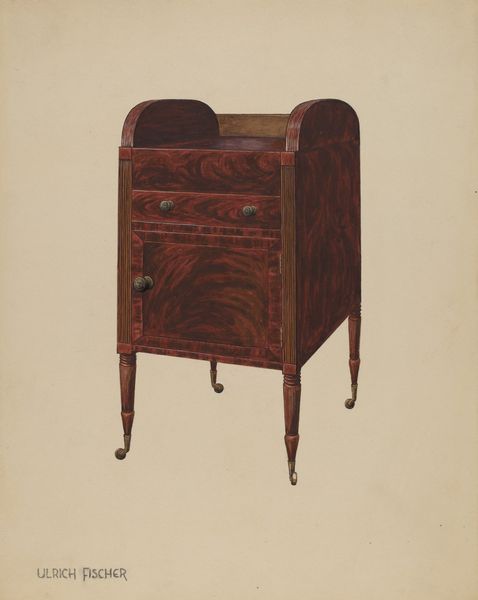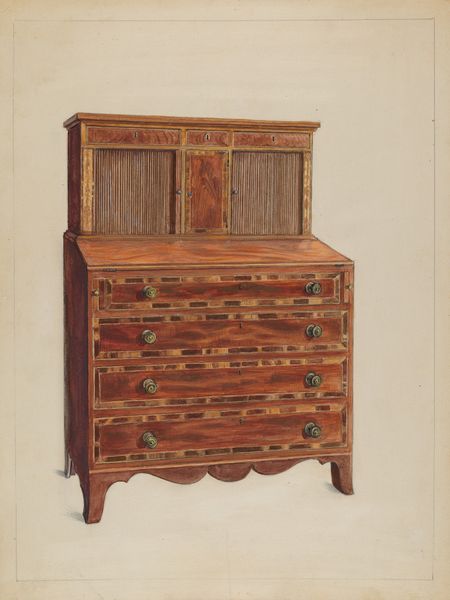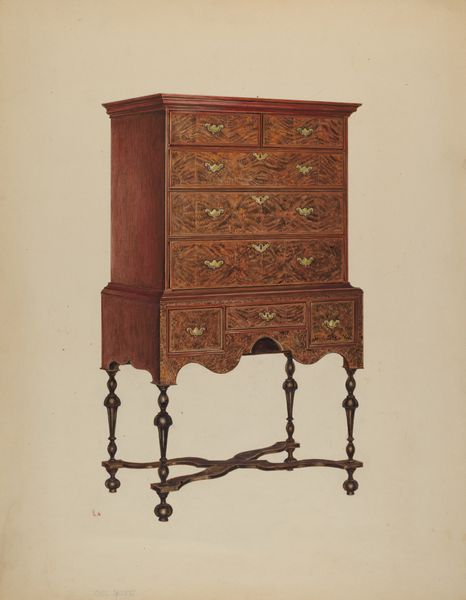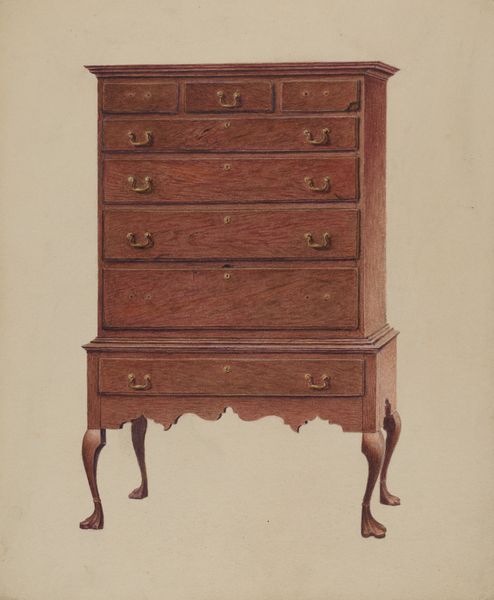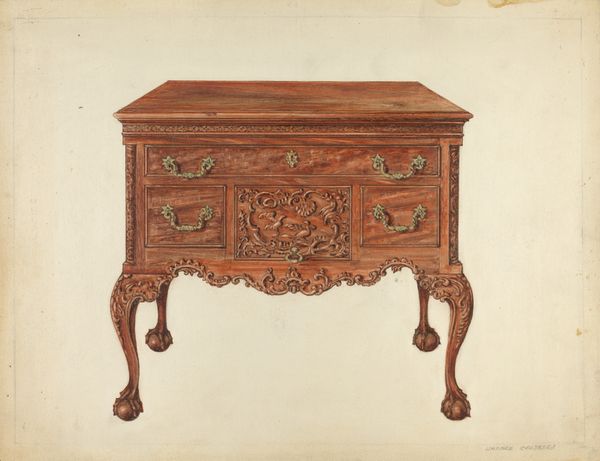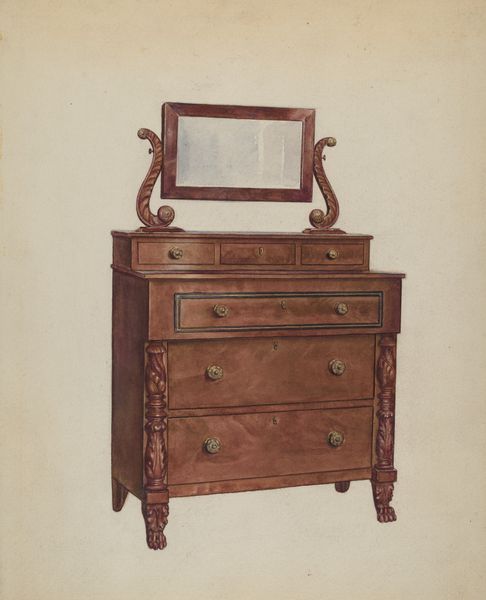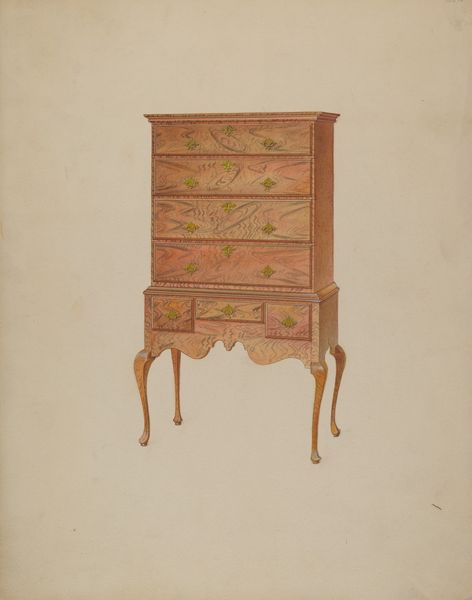
drawing, paper, pencil
#
drawing
#
paper
#
pencil
#
academic-art
#
realism
Dimensions: overall: 28.8 x 22.7 cm (11 5/16 x 8 15/16 in.) Original IAD Object: 3'7"high; 6'wide; 24 1/2"deep
Copyright: National Gallery of Art: CC0 1.0
Curator: Here we have Nicholas Gorid's "Side Board" from 1936, rendered in pencil on paper. What strikes you first about this drawing? Editor: The craftsmanship—even in depiction. It possesses a certain reserve, a muted elegance. The parallel lines and muted wood graining evoke a sense of quiet luxury and controlled beauty. Curator: Indeed. Consider this work within the context of 1930s American design. This piece represents a period of significant interest in furniture production. These types of drawings aided designers in both the planning and selling of new designs, making objects like sideboards available to a wider middle class. Editor: Note the perfect symmetry, echoed not just in the drawers, but in the legs and their positioning. There's a clear devotion to geometric relationships, but it also hints at the values assigned to this item within its context. The artist clearly delineates wood grains as the materials used during that period had symbolic association and status. Curator: I find myself pondering the absence of any sign of actual human presence. It makes me question the intended consumer of such items and its social implication. The drawing exists almost as an instruction manual. Editor: Interesting. To me the sideboard radiates this particular kind of domestic dream, so effectively rendered and presented in elevated visual structure. Curator: An object of material aspiration perhaps, yet one potentially rooted in exploitative manufacturing processes. This simple pencil and paper image raises complicated questions about labor and consumer culture. Editor: Even without delving into those complexities, what resonates is that Gorid captured an essence of its age, a time when the visual design carried profound, perhaps conflicting, cultural meaning. Curator: Ultimately, both the artistic rendition and the designed product reflect tangible historical, industrial, and material processes that shaped the world we inhabit today. Thank you. Editor: Indeed, thank you for shining some light into this fascinating example.
Comments
No comments
Be the first to comment and join the conversation on the ultimate creative platform.
